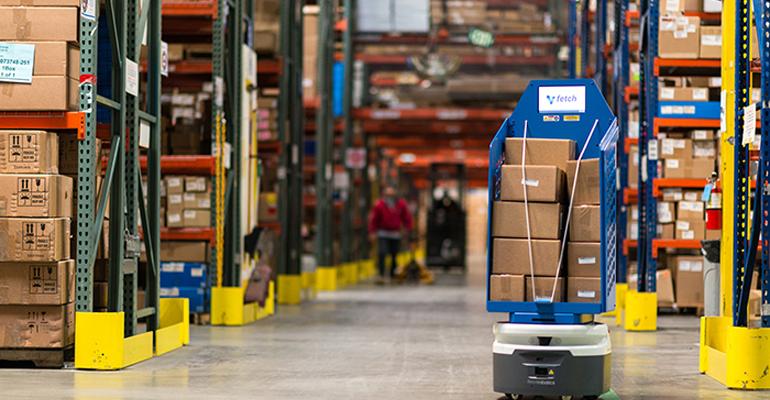E-commerce and last mile logistics tenants are fueling additional demand for industrial space expansion in the U.S., spurring midsize space users to dominate the industrial market.
Midsize industrial tenants—those who occupy 50,000-sq.-ft. to 300,000-sq.-ft. boxes, are driving industrial demand in key markets, including Indianapolis, Chicago, Atlanta and Dallas, according to a report from real estate services firm Avison Young.
For example, between January 2017 to June 2019, tenants in Chicago signed 872 industrial leases totaling 97.3 million sq. ft., with an average size of 111,629 sq. ft. Tenants in Atlanta signed 320 industrial leases totaling 36.2 million sq. ft., with an average size of 113,243 sq. ft. Dallas tenants signed 490 leases totaling 52.5 million sq. ft., with an average size of 107,265 sq. ft. Tenants in Indianapolis signed 41 leases totaling 52.5 million sq. ft., with an average size of 146,341 sq. ft., according to Avison Young.
“[Midsize users] do dominate the market,” says Brooks Staley, senior consultant with research firm the CoStar Group. “There are a lot more users who are looking for space in that kind of sweet spot than those who are looking for big boxes.”
For example, in Indiana, demand for midsize industrial space is booming, but the supply is scarce. As of mid-June 2019, there were 12 speculative industrial buildings of 250,000 sq. ft. or less being developed in Central Indiana, totaling 2.1 million sq. ft. In the state’s southern submarket, there is, however, only one midsize space available, a 70,400-sq.-ft. property in Greenwood.
“Indianapolis’s stability, low cost of doing business, and central location are attractive to distribution tenants and investors alike,” says Sean McHale, principal in Avison Young’s Indianapolis office. “We expect that rental rates will remain steady or rise slowly and cap rates will compress well into 2019.”
Florida’s industrial markets are also showing growth among midsize users. Orlando tenants signed 68 industrial leases totaling 7.3 million sq. ft., with an average deal size of 108,095 sq. ft. Tampa Bay tenants signed 53 industrial leases totaling 5.0 million sq. ft., with an average deal size of 94,333 sq. ft. Jacksonville tenants signed 61 leases totaling 7.0 million sq. ft., with an average deal size of 114,590 sq. ft.
The growth in e-commerce and the need for last mile delivery have only strengthened the demand for midsize industrial boxes. At the end of June 2019, pricing for those types of assets averaged $68.71 per sq. ft., with around $4.7 billion in sales volume, according to CoStar data. At the end of June 2018, prices averaged $59.08 per sq. ft., with $7.7 billion in sales volume. In June 2017, pricing in the sector was at $59.56 per sq. ft., with $7.3 billion in sales volume.
“You can see that there’s been a pretty steady acceleration of pricing at 300,000 square feet and below. The same goes for larger size as well,” says Staley. “Industrial is the hot property type to be in right now, and that makes sense because of the tailwinds we’re seeing from e-commerce, from how all sorts of retailers are looking at their supply chain. We’re going to see pricing boosts for both midsize and large boxes.”
But despite strong demand and rising prices for midsize industrial facilities, investment sales activity in the sector is decelerating. In June 2019, there were 639 deals closed in the sector. In June 2017 and 2018, there were 1,121 and 1,197 deals, respectively. Staley says this drop stems from investors choosing to invest in ground-up construction to dodge rising prices on existing properties.
“We’ve done analysis that shows that a lot more players in the industrial space are actually turning to development rather than acquisition in order to make returns,” says Staley. “[Pricing has] gotten so frothy in the marketplace that players are backing off or they’re saying, ‘We can develop. We can scrape a site and develop something.’ That would be the best shot at getting good returns.”
The same story is happening for large industrial facilities, or boxes with more than 300,000 sq. ft. In June 2017, pricing reached $48.18 per sq. ft., with around $3.2 billion in sales volume. By June 2019, prices climbed to an average of $76.20 per sq. ft., but with around $3.9 billion in sales volume.
“We would expect at the moment, because of how frothy pricing is for all ranges of sizes, that price appreciation will maybe stagnate a little bit as deals begin to dry up just a little bit,” says Staley. “People are little bit leery of overpaying this late cycle.”
In June 2017 and June 2018, investors completed 135 and 167 deals, respectively. That fell to 91 deals in June 2019.
“In addition, many communities have reached the saturation point with large bulk industrial space and are looking to midsize buildings instead to diversify their business base and look to secure higher paying jobs,” says McHale. “Some municipalities are embracing midsize buildings as a way to reduce traffic congestion and more easily integrate industrial buildings into communities and keep their local workforce working.”
Industrial property values rose by 4.0 percent in June, the highest increase among all commercial property types, according to the Commercial Property Price Index tracked by research firm Green Street Advisors. Over the past year, industrial property values rose by 9.0 percent, second only to values of manufactured home communities, which went up by 21 percent during that span.





